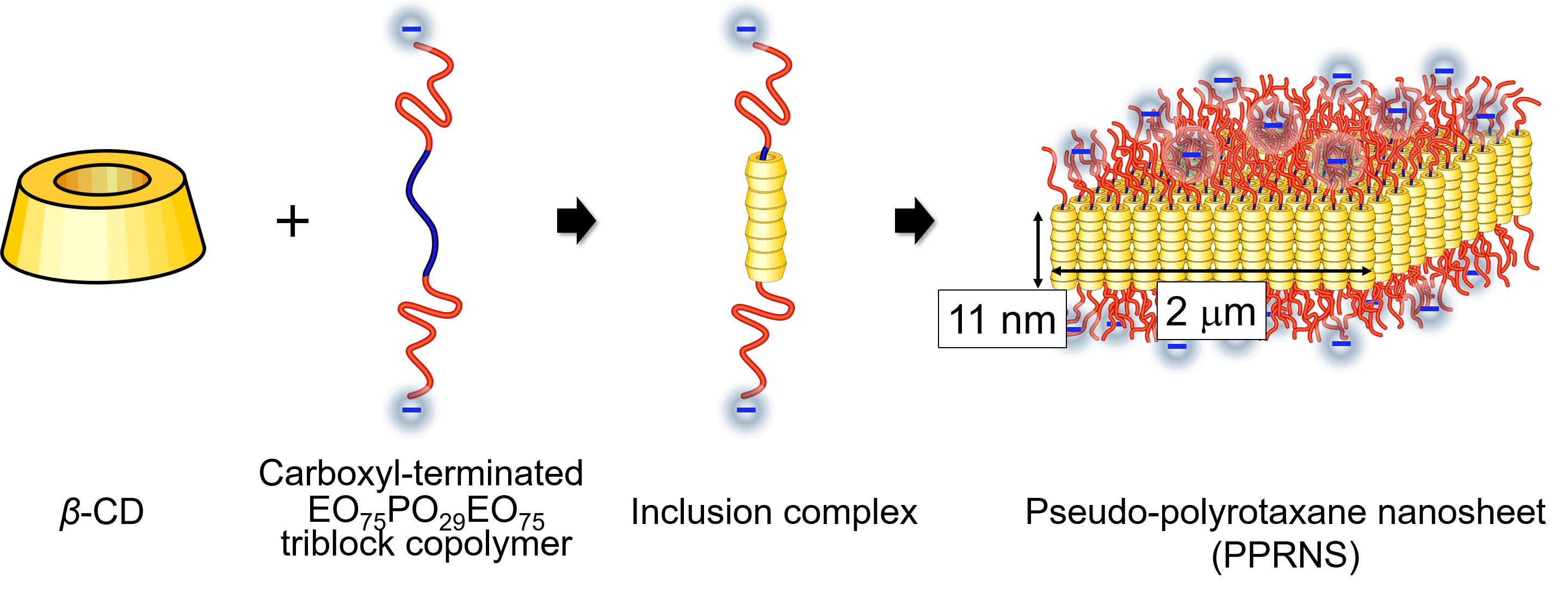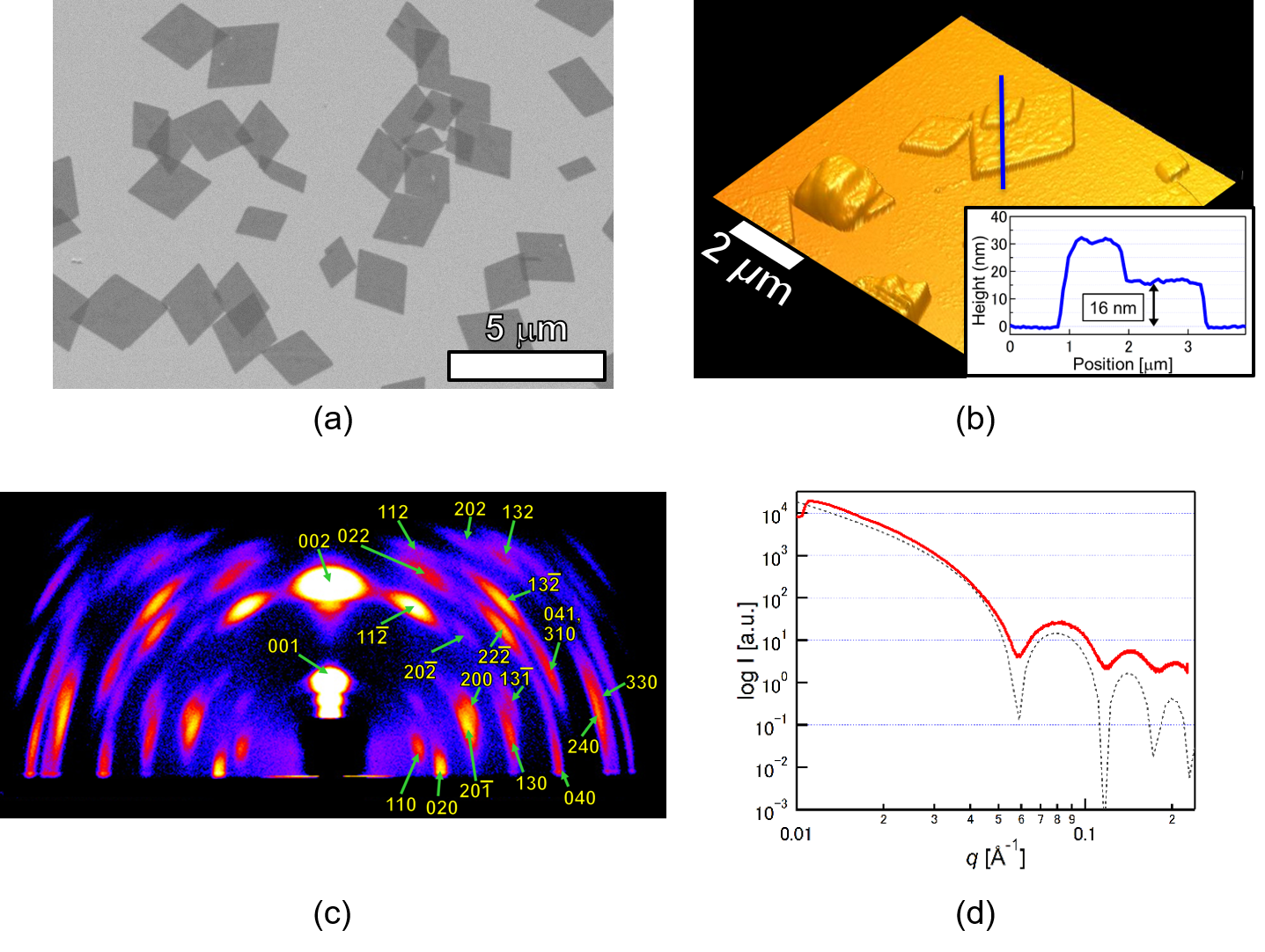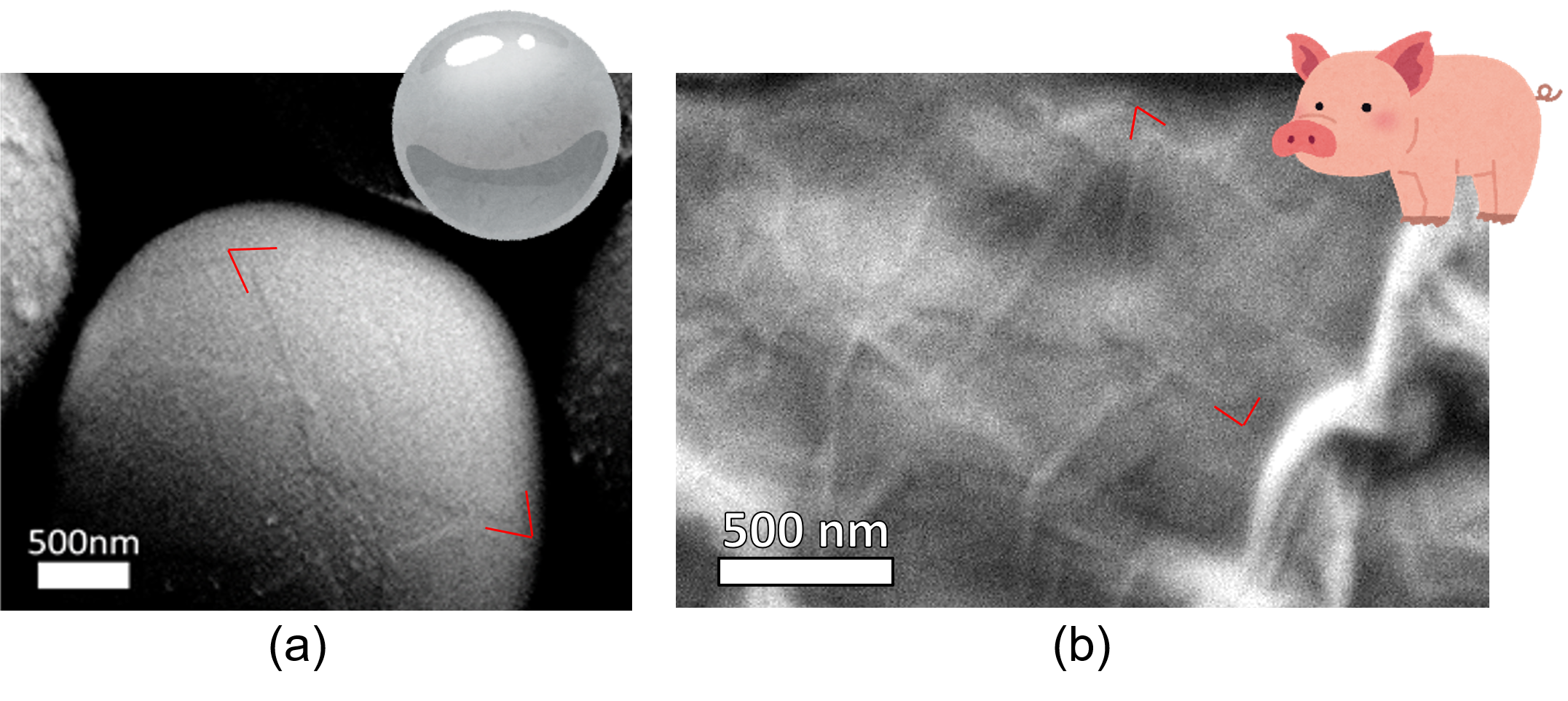Research
Pseudo-PolyRotaxane NanoSheet
Nanosheets are materials with the thickness of few nanometers, while its lateral size is on the order of micrometers. Most of nanosheets are constructed by covalent bonds as seen in graphene nanosheet, which is the representative of nanosheet materials (the Nobel Prize in Physics was awarded in 2010).
In 2018, our laboratory succeeded in synthesizing a new type of nanosheet material: Pseudo-PolyRotaxane NanoSheet (PPRNS) [1]. PPRNSs are made of cyclodextrin (CyD), a family of cyclic oligosaccharide, which spontaneously capture the polymers in CDs’ inner cavity in water at room temperature and undergo hierarchical self-assembly (Figure 1). When β-CyD and poly(ethylene oxide)75-block-poly(propylene oxide)29-block-poly(ethylene oxide)75 (HOOC-EO75PO29EO75-COOH) triblock copolymer with carboxylic acid at the axis ends are mixed in water, β-CyD selectively covers only the PO segment. Then, the height of accumulated β-CyDs along PO29 is limited to the fully extended chain length of PO29 (about 11 nm). These units assemble only in a direction of β-CyD diameter and form PPRNS. The structure of the PPRNS was investigated by scanning electron microscopy (SEM), atomic force microscopy (AFM), small-angle and wide-angle X-ray scattering (SAXS/WAXS), grazing-incidence wide-angle X-ray scattering (GIWAXS), X-ray reflectometry (XR), neutron reflectometry (NR), and optical microscopy (OM) (Figure 2). PPRNSs will have the potential to open up new applications of nanosheet materials. To date, we have successfully synthesized PPRNSs consisting of different type of CyD (α- and γ-CyD). We have also succeeded in controlling the thickness of PPRNSs by designing the axial polymer[2][3][4].
The highly biocompatible nature of CyD and axis polymers (usually polyethers) that make up PPRNSs is one of the key features of PPRNSs. PPRNSs exhibit flexibility based on their extremely thin film thickness, which allows them to follow and strongly adhere to uneven substrates through short-range interactions. These features of PPRNSs make them ideal for use as tissue coating agents, and we have been conducting adhesion experiments on bio-related materials (Figure 3). We are also investigating the ability of PPRNSs to load small molecules for application as drug delivery system (DDS) [5].

Figure 1. Schematic illustration of the formation of PPRNS.

Figure 2. (a) SEM image, (b)AFM image, (c)2D GIWAXS pattern of PPRNS in a dried state, and (d)1D SAXS pattern of PPRNS in water.

Figure 3. SEM image of PPRNS on (a) a polystyrene spherical bead with the diameter of 2.86 μm and on (b) a pig skin. PPRNSs are bended to follow the rough surfaces.
References
[1] S. Uenuma, R. Maeda, H. Yokoyama, K. Ito, Chem. Commun.>, 2019, 55, 4158.
[2] S. Uenuma, R. Maeda, H. Yokoyama, K. Ito, Macromolecules>, 2019, 52, 3881.
[3] S. Uenuma, R. Maeda, H. Yokoyama, K. Ito, Polymer>, 2019, 179, 121689.
[4] S. Uenuma, R. Maeda, H. Yokoyama, K. Ito, Soft Matter>, 2020, 16, 9035.
[5] S. Uenuma, R. Maeda, H. Yokoyama, K. Ito, ACS Macro Let.>, 2021, 10, 237.